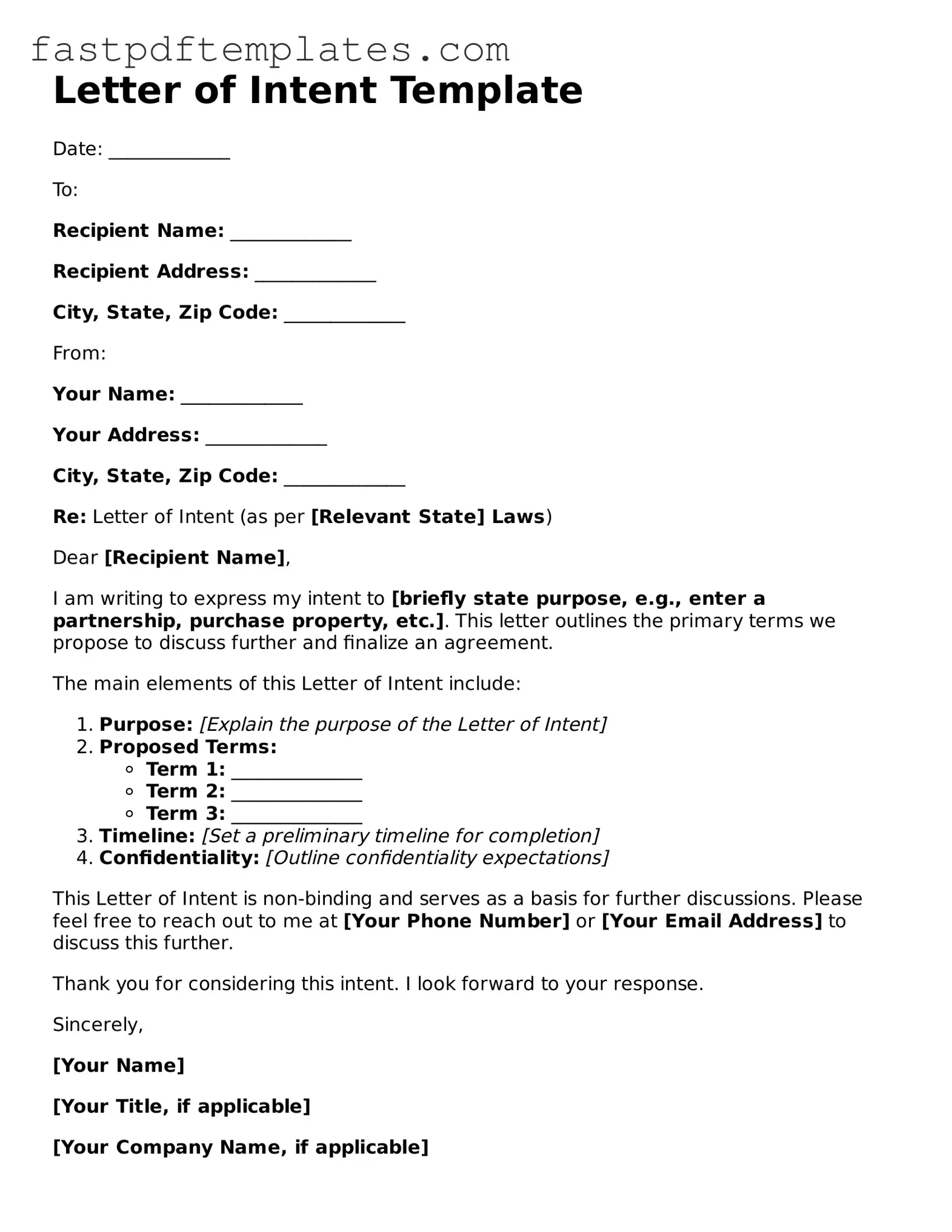Letter of Intent Template
Date: _____________
To:
Recipient Name: _____________
Recipient Address: _____________
City, State, Zip Code: _____________
From:
Your Name: _____________
Your Address: _____________
City, State, Zip Code: _____________
Re: Letter of Intent (as per [Relevant State] Laws)
Dear [Recipient Name],
I am writing to express my intent to [briefly state purpose, e.g., enter a partnership, purchase property, etc.]. This letter outlines the primary terms we propose to discuss further and finalize an agreement.
The main elements of this Letter of Intent include:
- Purpose: [Explain the purpose of the Letter of Intent]
- Proposed Terms:
- Term 1: ______________
- Term 2: ______________
- Term 3: ______________
- Timeline: [Set a preliminary timeline for completion]
- Confidentiality: [Outline confidentiality expectations]
This Letter of Intent is non-binding and serves as a basis for further discussions. Please feel free to reach out to me at [Your Phone Number] or [Your Email Address] to discuss this further.
Thank you for considering this intent. I look forward to your response.
Sincerely,
[Your Name]
[Your Title, if applicable]
[Your Company Name, if applicable]
